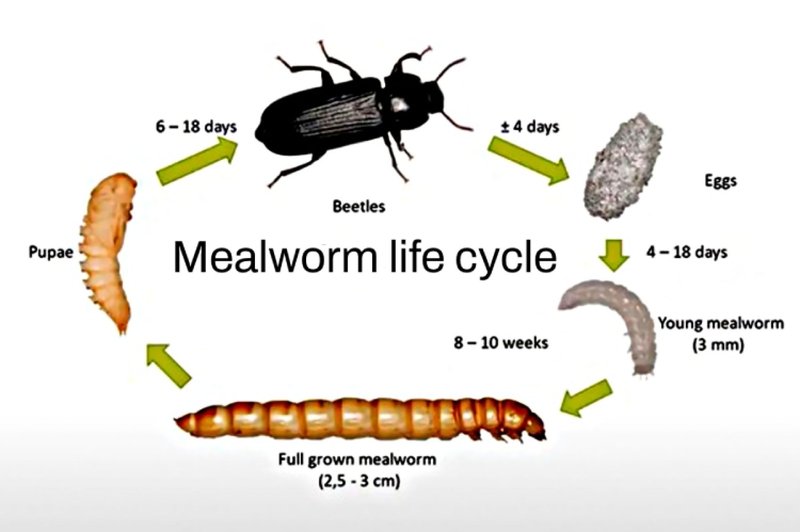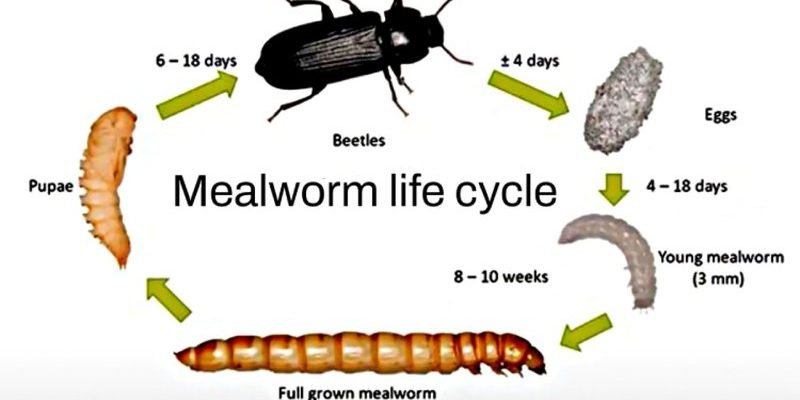
The truth is, mealworms are the larvae of darkling beetles, and they’re not just found in your pantry. They thrive in a range of habitats, consuming decaying plants and organic materials. By doing this, they contribute to soil health by recycling nutrients. If you’re wondering how these tiny creatures fit into the bigger picture of our ecosystems, let’s dive in and explore their contributions in more detail.
What Are Mealworms?
Mealworms are the larvae of the *Tenebrio molitor* beetle. You might catch them munching on cereal grains, decaying plant matter, or even compost. Their life cycle is fascinating, moving from egg to larva (the mealworm stage), then to pupa, and finally emerging as an adult beetle. Throughout this process, they consume and break down organic materials.
Mealworms are rich in protein and other nutrients, making them valuable not just for wildlife but also as a food source for humans. In some cultures, they’re considered a delicacy! Here’s the thing: their true value extends beyond being just a food source. They’re essential for maintaining the balance within ecosystems—both in the soil and in aquatic environments.
The Role of Mealworms in Soil Ecosystems
In the soil, mealworms serve as decomposers. As they feed on organic matter like dead leaves or plant roots, they break it down into simpler compounds. This process enriches the soil with nutrients, making it fertile and promoting plant health. You can think of them as miniature gardeners, aerating the soil and helping it retain moisture.
Moreover, mealworms contribute to the food web. Many animals, like birds and small mammals, rely on them as a food source. By supporting a variety of life forms, mealworms help maintain biodiversity in their ecosystems. In this sense, they’re like the unsung heroes of the soil, quietly doing their job while supporting other species.
Enhancing Soil Conditions
Mealworms don’t just break down organic material; they also help improve soil structure. Their movement through the soil creates pathways, allowing air and water to circulate more freely. This aeration is crucial for healthy root growth and prevents soil compaction.
Additionally, as mealworms digest organic matter, they produce waste that is rich in nutrients like nitrogen and phosphorus. When this waste becomes part of the soil, it enhances the soil’s fertility, supporting plant growth. You might be surprised at how much impact these tiny creatures can have just by doing what comes naturally to them!
Mealworms in Aquatic Ecosystems
While we often think of mealworms in terrestrial ecosystems, they play a role in aquatic systems too. In ponds and lakes, mealworms can be found in the sediment at the bottom. They help break down decaying plant and animal matter, similar to their function in soil.
By decomposing this organic material, mealworms contribute to nutrient cycling in aquatic environments. The nutrients released back into the water can support the growth of algae and aquatic plants, forming the base of the food web. This interdependence is crucial for maintaining the health of aquatic ecosystems.
Supporting Aquatic Life
In addition to contributing to nutrient cycling, mealworms serve as a food source for various aquatic creatures. Fish, amphibians, and other wildlife often feast on mealworms as part of their diet. This connection ties them into the larger web of life in aquatic ecosystems, showcasing their importance beyond just soil.
Interestingly, the health of an aquatic ecosystem can often be gauged by the presence of organisms like mealworms. Their populations reflect the levels of decomposition and nutrient cycling happening in the water. So, when you see mealworms thriving in a pond, it’s often a sign that the ecosystem is in good shape!
Mealworms and Sustainable Practices
Given their vital role in ecosystems, mealworms offer exciting possibilities for sustainable practices. Many farmers and gardeners are exploring ways to incorporate mealworms into their land management strategies. By fostering a healthy mealworm population, they can improve soil health naturally, reducing the need for chemical fertilizers.
Furthermore, mealworms are being studied for their potential in waste management. For instance, they can help break down organic waste, turning it into nutrient-rich compost. This process not only reduces waste volume but also contributes to more sustainable agriculture practices.
Innovative Uses of Mealworms
Several innovative projects are leveraging the power of mealworms. Startups and researchers are investigating their use in composting systems, animal feed, and even bioplastics. By tapping into the natural processes of mealworms, we can create more sustainable solutions for various industries.
For example, some companies are developing mealworm-based protein products for human consumption. This not only provides a sustainable food source but also reduces the environmental impact compared to traditional livestock farming.
Challenges and Conservation
Despite their many benefits, mealworms face challenges from habitat loss and pesticide use. As we continue to urbanize and intensify agriculture, their natural habitats can be compromised. To ensure that mealworms continue to thrive, conservation efforts are essential.
You might be wondering what you can do to help. Supporting sustainable farming practices, minimizing pesticide use, and creating habitats for mealworms in your garden can all make a difference. Every small effort counts when it comes to preserving these vital creatures!
Building Awareness
Raising awareness about the importance of mealworms can also lead to better conservation efforts. Schools, community groups, and environmental organizations can play a role in educating others about these fascinating larvae. The more people understand their significance in ecosystems, the more likely they’ll be to support conservation initiatives.
Mealworms might seem like simple little creatures, but their role in soil and aquatic ecosystems is anything but ordinary. They help break down organic matter, enrich the soil, and support various life forms. By understanding their importance, we can appreciate the intricate web of life they’re part of and take steps to protect their habitats.
At the end of the day, mealworms remind us that sometimes the smallest players can have the biggest impact. So next time you see one of these little larvae, take a moment to recognize their invaluable contribution to our planet. They’re not just food for birds; they’re essential for a thriving ecosystem!

